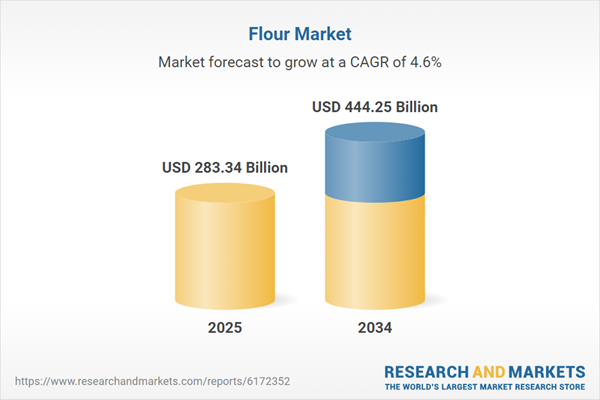Rising Demand for Flour from the Food and Beverage Industry is Pushing the Growth of the Market
The global market for flour is being driven by the surge in world populations and the corresponding growing demand for food. Flour is an important ingredient used for making bread, which is an essential staple food product in many Asian, European, African, and American countries around the world. The health benefits associated with wheat flour, such as lowering cholesterol levels, improving metabolism, and controlling obesity, among others, are boosting the growth of the market.In addition to this, the surging demand for wheat flour can be associated with the flourishing food and beverage industry around the world. The rise in the consumption of ready-to-eat, fast foods, and bakery products are invigorating the demand for flour for the production of products like cakes, pastries, pizzas, doughnuts, burgers, and pasta, among others. In line with this, the growing market penetration of quick-service restaurants and the corresponding shifting consumer demands are some of the factors, which are positively impacting the market growth of flour globally.
Flour: Industry Definitions and Segmentations
Flour essentially refers to a powder obtained from grinding grains, particularly wheat, which is then used to make bread, cakes, and pastries, among other food products. Currently, wheat represents one of the most popular food ingredients used around the world.Breakup by Type
- Wheat
- Maize
- Rice
- Oats
- Others
Breakup by Form
- Wet
- Dry
Breakup by Application
- Food Application
- Animal Feed
- Non-Food Application
- Others
Breakup by Region
- North America
- Europe
- Asia-Pacific
- Latin America
- Middle East and Africa
Innovations in Product Portfolio are Bolstering the Growth of the Market
The global market for flour is growing on account of expansion in product portfolio by leading market players. Due to the rising prevalence of gluten intolerance, the introduction of gluten-free flour, such as rice flour, soy flour, and maize flour, among others. In addition to this, the market growth can further be associated with the rising awareness about conscious eating and the surge in the number of health-conscious consumers. Thus, the introduction of flour with high protein content, along with the availability of vitamin-A fortified wheat flours are additional products expanding the overall growth of the market.Apart from this, the use of wheat flour for the production of bioplastics, adhesives, hair care products, and paper, among others, are some of the growth-inducing factors of the overall flour market, apart from the food applications. Hence, these are some of the factors collectively augmenting the growth of the market.
Key Industry Players in the Global Flour Market
The report presents a detailed analysis of the following key players in the global flour market, looking into their capacity, market shares, and latest developments like capacity expansions, plant turnarounds, and mergers and acquisitions:- Archer Daniels Midland Company
- Ardent Mills LLC
- ABF Grain Products Limited (Allied Bakeries)
- General Mills, Inc.
- Others
Table of Contents
Companies Mentioned
The key companies featured in this Flour market report include:- Archer Daniels Midland Company
- Ardent Mills LLC
- ABF Grain Products Limited (Allied Bakeries)
- General Mills, Inc.
Table Information
| Report Attribute | Details |
|---|---|
| No. of Pages | 151 |
| Published | August 2025 |
| Forecast Period | 2025 - 2034 |
| Estimated Market Value ( USD | $ 283.34 Billion |
| Forecasted Market Value ( USD | $ 444.25 Billion |
| Compound Annual Growth Rate | 4.6% |
| Regions Covered | Global |
| No. of Companies Mentioned | 5 |









